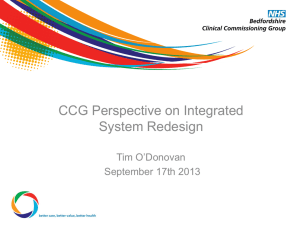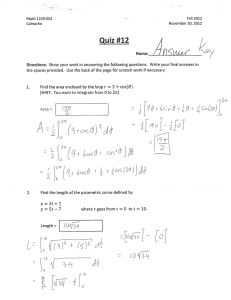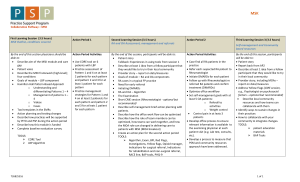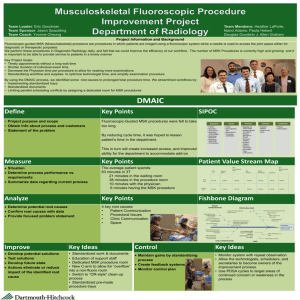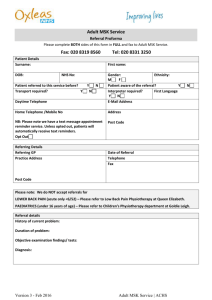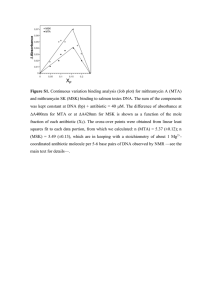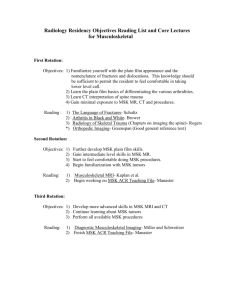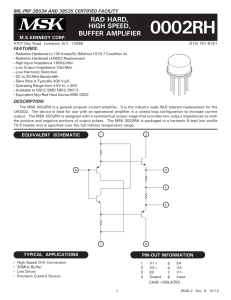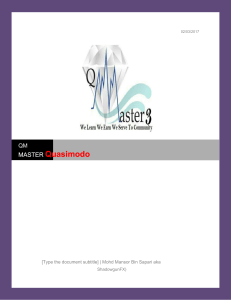MIL-PRF-38534
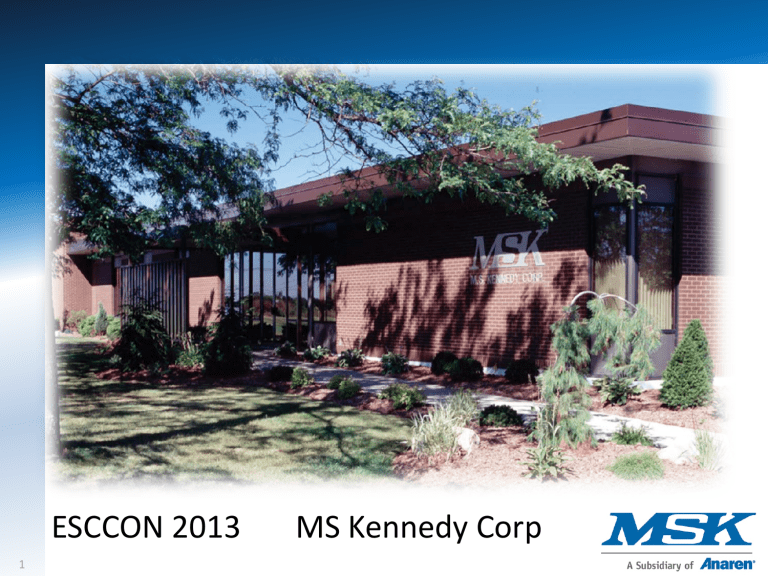
1
ESCCON 2013 MS Kennedy Corp
2
Activities related to Standardization of MIL-
PRF-38534 Rad-Hard Hybrid/MCM and MIL-
PRF-38535 Microcircuits
3
Products: Analog and RAD MCM/Hybrids and Microcircuits
•
MIL-PRF-38534 Class G, H, K for RAD Voltage Regulators,
Switching Regulators, Motor Controllers and Amplifier
MCM/Hybrids
•
MIL-PRF-38535 Class Q and V for RAD single chip and Analog
Microcircuits
•
MIL-PRF-38534 Class K for single chip quasi hybrid/MCM
(Microcircuit on an insulating substrate mounted into a hermetic package)
•
For US Market MSK also manufacturers a wide variety of custom Microcircuits/MCM/hybrids for unique program requirements
4
MSK Involvement in MIL-PRF-38534 & -38535 Standards
•
MIL-PRF-38534
•
MIL-PRF-38535
•
AS9100
•
JEDEC involvement of MSK -
MSK quality manager has been an active member for
25 years and is JC13.5 Chair for Hybrid/MCM technology.
•
Class K – Space level hybrid microcircuit, highest level of reliability for Hybrids/MCM devices
•
Devices available in Defense Logistics Agency
Standard Microcircuit Drawing (SMD), Customer controlled Source Controlled Drawings (SCD) or
Manufacturer catalog data sheets
Elements Used in MIL-PRF-38534 Hybrid/MCM Device
5
I deal Class K hybrids use:
•
MIL-PRF-38535 for compliant microcircuits (QML),
MIL-PRF-19500 for compliant semiconductors (JANKC)
•
MIL-PRF-55681 for compliant ceramic (CDR) capacitors
MIL-PRF-55365 for compliant tantalum (CWR) capacitors
MIL-PRF-55342 for compliant thickfilm (Class T) resistors
•
Other MIL-PRF compliant passives (inductors, crystals, transformers).
When Compliant Elements are not available:
•
MIL-PRF-38534 contains element evaluation tables
•
Tables currently lack the proper element evaluations for
Class K devices
•
JEDEC has an active task group to improve EE tables for elements NOT manufactured to a MIL-PRF specification.
6
Elements Used in MIL-PRF-38534 MCM, continued
Key changes by JEDEC to MIL-PRF-38534 for element evaluation include:
•
Microcircuit quantity increased from 10 to 22
•
Semiconductors tested to MIL-PRF-19500 JANKC flow
•
Ceramic capacitor up-screen flow generated
•
Capacitor parallel plate flow generated
•
Capacitor MOS flow generated
•
Tantalum capacitors up-screen flow generated
•
Thin film wirebondable resistors tested to a sample flow similar to
MIL-PRF-55342
•
Magnetics (closed and open construction) tested to a flow similar to MIL-STD-981
•
Crystal flow generated
•
Device finish verification added to applicable flows to prevent use of pure tin finishes
7
MIL-PRF-38534 Class K process monitoring
Includes wirebond and hermetic seal process controls
•
Both are adequate although companies add value to both for improved process control
Wirebond controls
•
Requirement: In-line group B -destruct wire testing on each machine every 13 weeks
•
MSK performs this weekly to validate the machines and operators
•
MSK Performs 300C bake with destruct bond pull and ball shear
•
MSK performs destruct bond pull testing and ball shear testing prior to wirebonding of flight devices using simulated devices
•
No current JEDEC plans to change wirebond process controls
Hermetic Seal controls
•
MSK’s hermetic seal process is in accordance with MIL-PRF-38534
•
Some companies perform Internal Vapor Analysis process monitoring
8
MIL-PRF-38534 Class K Screening
Class K screening has not changed in many years although JEDEC is discussing tighter leak test limits
•
MSK believes the science behind the air exchange of a hermetic device could allow oxygen or other gases inside a device and could potentially cause a device failure.
•
A potential but unlikely failure is present in all manufacturing processes and materials and it is up to Industry to reduce risk in high reliability electronics.
•
MSK supports tightening of the fine leak limits.
•
MSK is reviewing different leak test methods available and will be making a capital investment within the next 3 months. The new test method include:
Kr85 leak testing
Optical leak testing
CHLD leak testing
•
MSK records helium fine leak data for each device
9
MIL-PRF-38534 Class K Screening
Typical Screening Options flowed down :
•
Some customers require special testing of devices at precap inspection to validate the device prior to continuing the processing.
–
These include SEM, destruct bond pull, die shear, etc.
–
MSK does not believe these tests are needed based on SEM at element evaluation, wirebond set up data is in compliance and processes are QML qualified
•
Pre-cap photographs
•
Full temperature testing with recorded data prior to burnin.
•
Burn in test conditions being discussed in JEDEC
•
Delta testing
•
X-Ray in additional axis (X and Y modes)
10
Qualification testing to MIL-PRF-38534
A device must be qualified (QML compliant) once in the devices life unless a major change has been made
•
The initial compliant testing include:
–
Class K screening 100%
–
Final electrical/”Group A” electrical testing
–
In-line or End of line “Group B” testing
–
QML or “Group C” testing (if processes and materials are QML compliant, then Periodic Inspection testing should be performed)
–
Life test of the design at “Group C2”
–
“Group D” testing (normally package EE data is used for “Gp D”)
•
For each Class K production build, as a minimum, the devices are
–
Class K screened
–
Final electrical/Group A tested
–
In-line or End of line Group B tested
•
The QML and life test data performed initially does not have to be performed on future production builds
Does MIL-PRF-38534 lack reliability testing for each build?
11
Customer Qualification Requirements
A majority of space programs have specific requirements above the MIL-PRF-38534 Class K baseline
•
A SCD depicting unique qualification requirements (vib, shock, vacuum)
•
A SCD calling out a SMD with unique requirements
•
A SCD with QML testing and life test every date code or inspection lot
•
A SCD with End-of- line “Group B” that may state no ball lifts
•
A SCD with Periodic Inspection testing every date code or inspection lot.
•
A SCD with QML and DPA testing.
•
DPA quantity of 1, 3, 5 or a percentage of the date code or inspection lot
•
What are your special requirements?
For these reasons and lack of consistency in the space industry,
JEDEC can not address the concerns of qualification testing and will keep MIL-PRF-38534 as is with no recommended changes
Can a 5962X SMD part number be purchased and meet the requirements?
MIL-PRF-38534 Radiation
12
MIL-PRF-38534 Appendix G for Radiation
•
JEDEC and DLA working on revising Appendix G to include:
- Specify what the RAD element/device is tested to
- Minimum testing includes TID and ELDRS characterization
- Specify test plan requirements (RAD levels, RAD testing, test limits, bias conditions, burn-in time,
- Specify if ELDRS testing was performed
- Specify the Design Analysis performed (EOL, Hydrogen, temperature, over test, 99/90, etc)
- Element technology for radiation effects
- Determine Hydrogen effects and IVA test RAD build as required
- Element and Hybrid/MCM verification requirements
- Other radiation testing to be flowed down based on program
13
Questions Regarding Space Level Devices
•
MIL-PRF-38534 Class K compliant hybrids sometimes do not meet US program requirements (i.e. GPSIII)
•
Are MIL-PRF-38534 Class K SMD products acceptable as is?
MSK believes YES, based on non military space programs
•
Is extra testing of a SMD device required? MSK believes NO, since the device is QML compliant and qualified.
•
MIL-PRF-38534 and QML are all about reliability and reducing risk, although each of us may have a unique view on the subject!!!!
•
Is MIL-PRF-38534 and QML an acceptable baseline for ESA?
MSK believes YES, based on the activities in place.
•
What MIL-PRF-38534 baseline additions are necessary to cover industry needs and be cost effective?
•
Beyond TID and LDR radiation testing……each program is unique.
14
